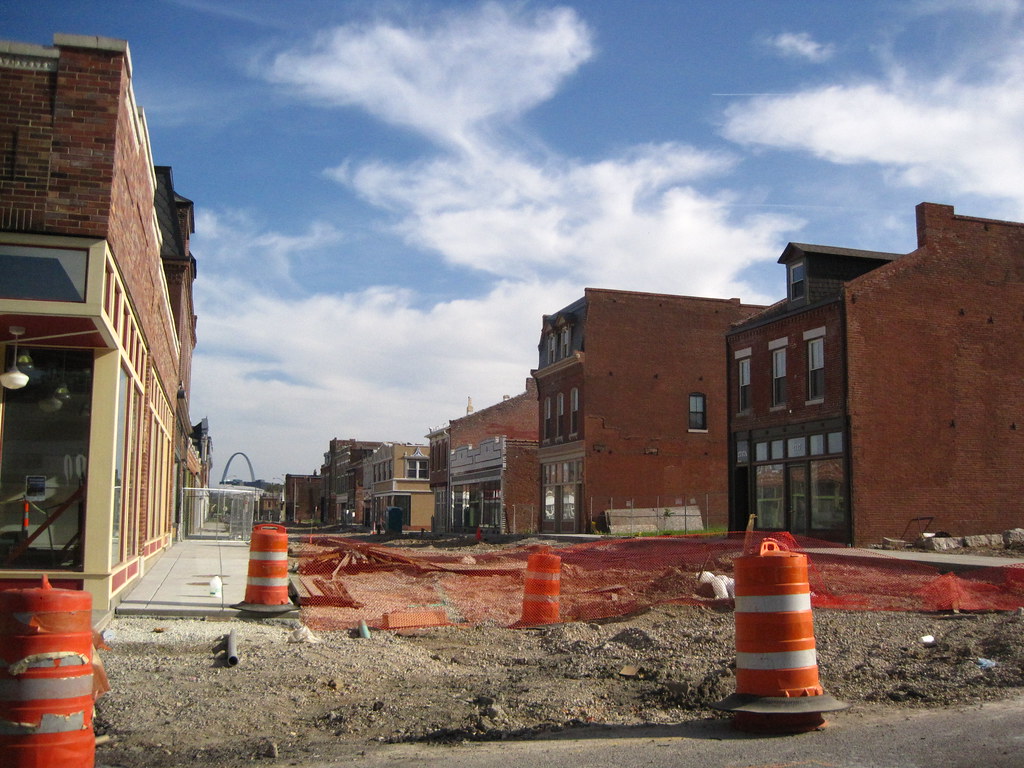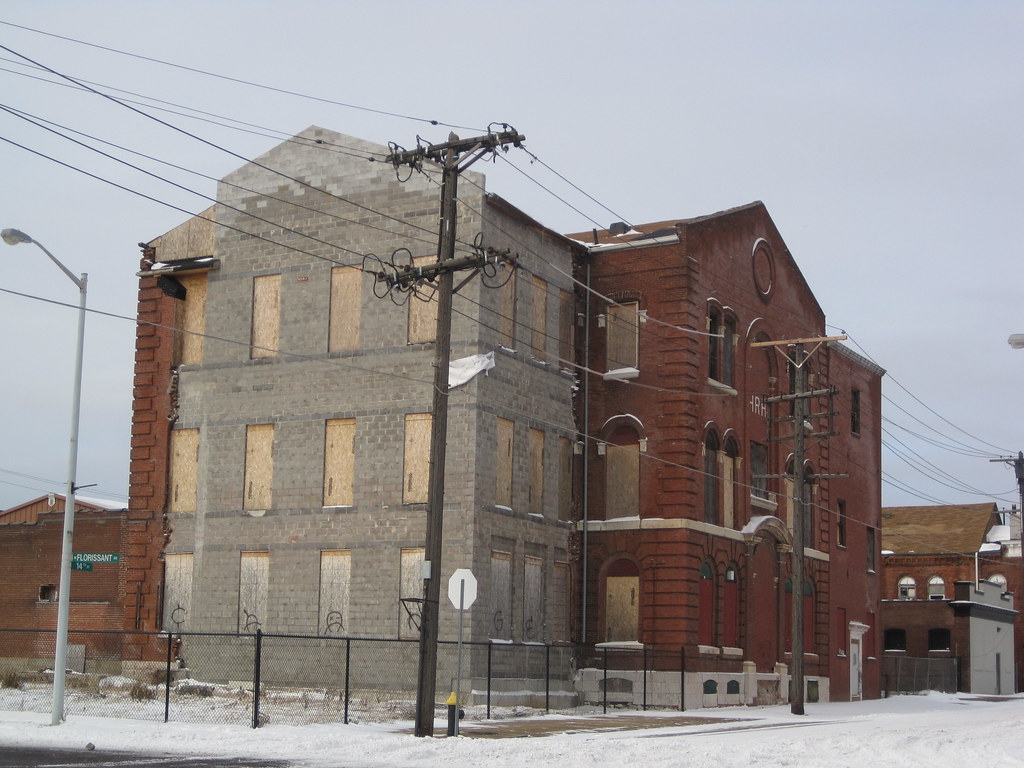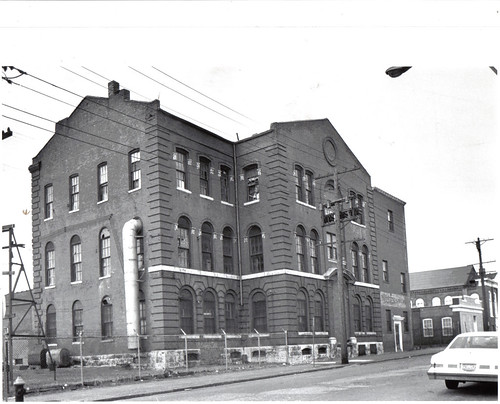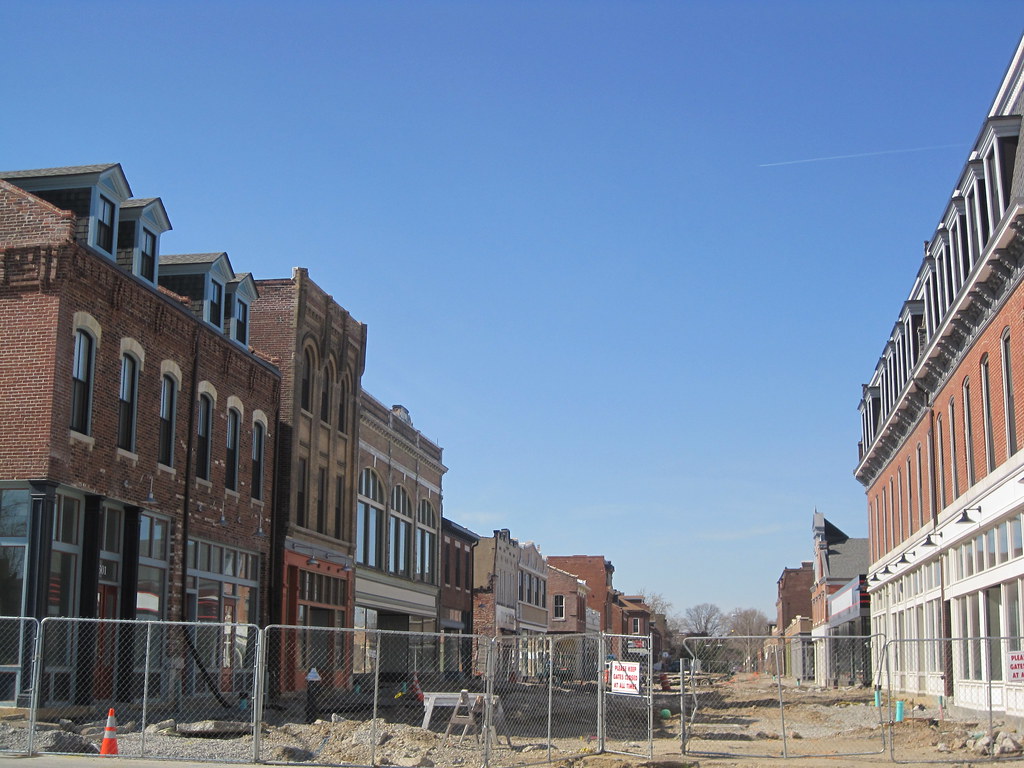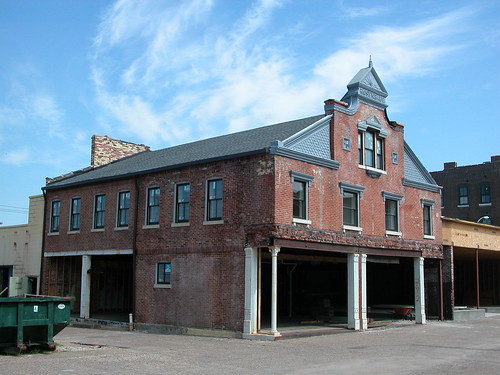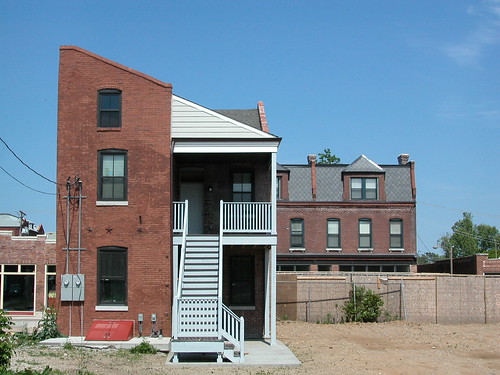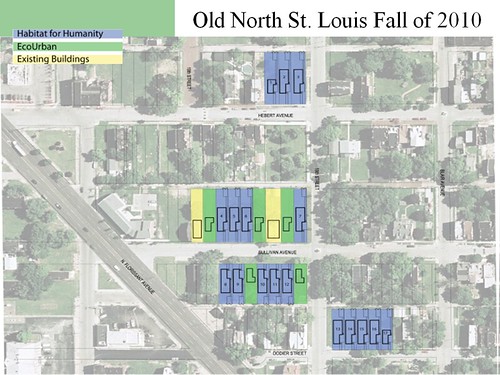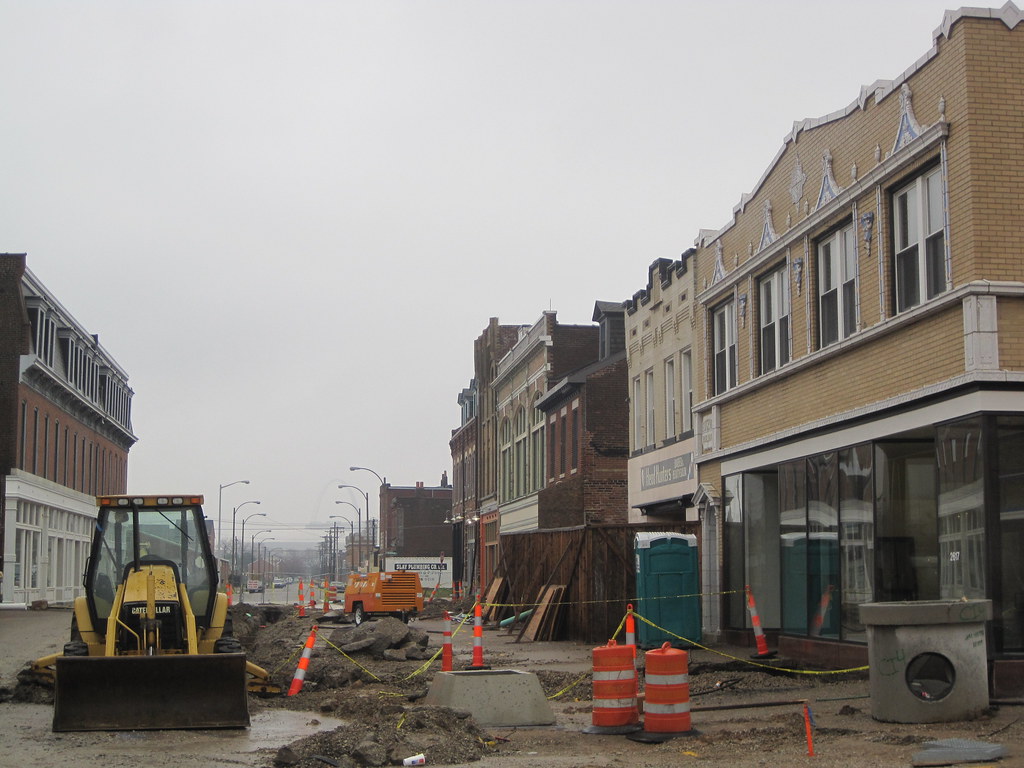by Michael R. Allen
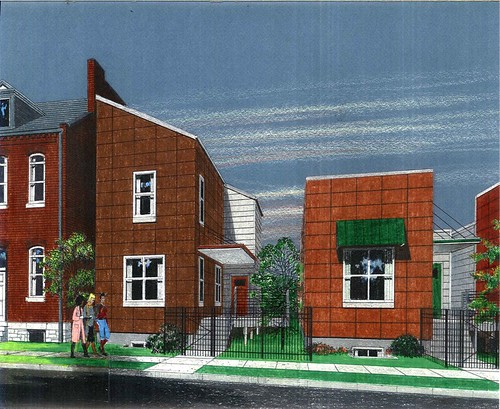
After nearly 120 years since the last documented flounder house was built in the city of St. Louis — and so many have gone undocumented, so who knows when the last was built — the flounder house is back! A new flounder house is under construction in Old North St. Louis on Hebert Street just west of 19th Street. Habitat for Humanity is building the house, continuing its commitment to both green construction and smart modern design. The rendering above shows what the house will look like when completed.
The house prominently displays the characteristic that makes a flounder house a unique building type: a roof that slopes from one side of the building to the other with no offset. Many flounders display this plain, simple slope, a roof form that has been traced back to southern European architecture of the Renaissance. Other flounders have a front hip with part of the roof sloping down toward the front. In the United States, the flounder form has been found mostly in the south. New Orleans, Savannah and Alexandria all have documented flounders. Philadelphia has flounders. St. Louis has as many as 160, but probably had many more at the end of the 19th century. Almost all surviving local examples are brick, but there are several frame flounder houses remaining in New Orleans. For a long time, architectural historians studied the flounder as a phenomenon but recent study has found traceable historic roots and has turned up more examples in a diverse range of cities. Still unknown is why flounders are found some places but not others, and why St. Louis has so many.
 Here is what the flounder looked like under construction last week. The juxtaposition with the stately Second Empire home to the west is provocative. Cities need such diversity of forms.
Here is what the flounder looked like under construction last week. The juxtaposition with the stately Second Empire home to the west is provocative. Cities need such diversity of forms.
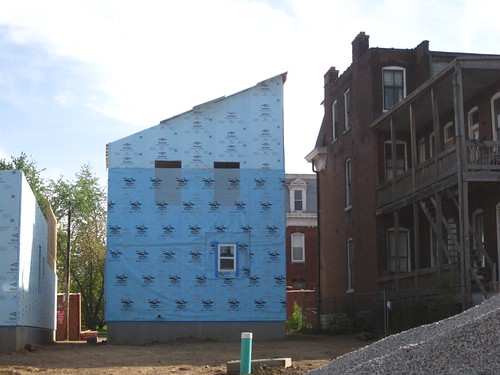 Here’s the view of the back. The finish will be a concrete board, so this house will be one of the only frame flounder houses in the city when completed.
Here’s the view of the back. The finish will be a concrete board, so this house will be one of the only frame flounder houses in the city when completed.
There are other flounder houses remaining in Old North. This selection leaves a few out, so go take a look around for yourself to see more.
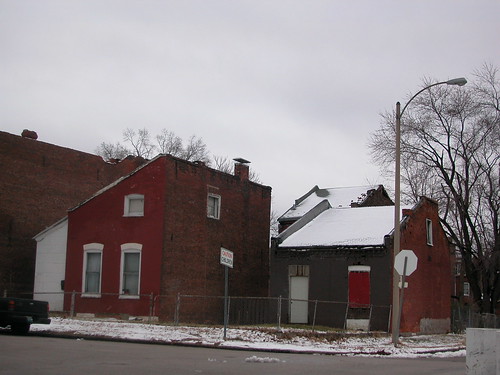 The one-and-a half-story flounder at 1422 Hebert Street is owned by Paul J. McKee’s Northside Regeneration LLC, as is the small side-gabled home next door and a larger brick house at the alley behind 1422. The future of all three sadly remains uncertain.
The one-and-a half-story flounder at 1422 Hebert Street is owned by Paul J. McKee’s Northside Regeneration LLC, as is the small side-gabled home next door and a larger brick house at the alley behind 1422. The future of all three sadly remains uncertain.
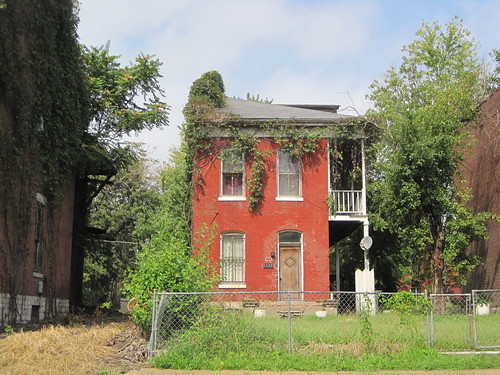 At 1115 Tyler is a flounder house with a front hip. The roof overhangs an intact two-story gallery porch on the east elevation. The house sits back from the street.
At 1115 Tyler is a flounder house with a front hip. The roof overhangs an intact two-story gallery porch on the east elevation. The house sits back from the street.
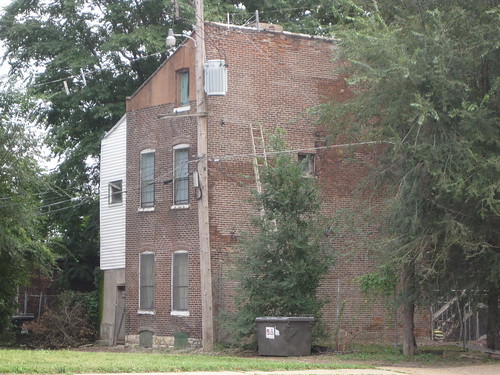 This tall flounder sits on the alley at 1455 Clinton Street. The brown-painted area at top is mortar parging (or covering) over the brick.
This tall flounder sits on the alley at 1455 Clinton Street. The brown-painted area at top is mortar parging (or covering) over the brick.
 The owner of the flounder house at 1905 Dodier applied for a demolition permit last year, but agreed to defer an appeal to the Preservation Board to work on a preservation solution.
The owner of the flounder house at 1905 Dodier applied for a demolition permit last year, but agreed to defer an appeal to the Preservation Board to work on a preservation solution.
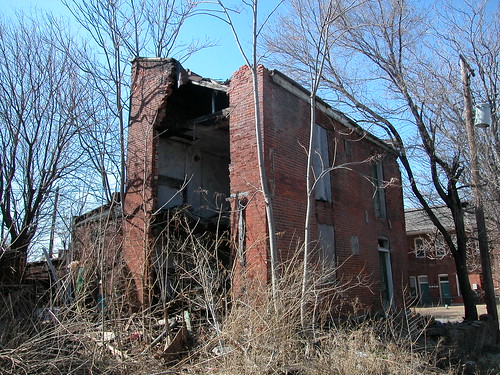 This flounder house at 1453 Monroe Street is not long for this world. The south elevation is largely missing and the north elevation has several large holes. The joists have started descending.
This flounder house at 1453 Monroe Street is not long for this world. The south elevation is largely missing and the north elevation has several large holes. The joists have started descending.

